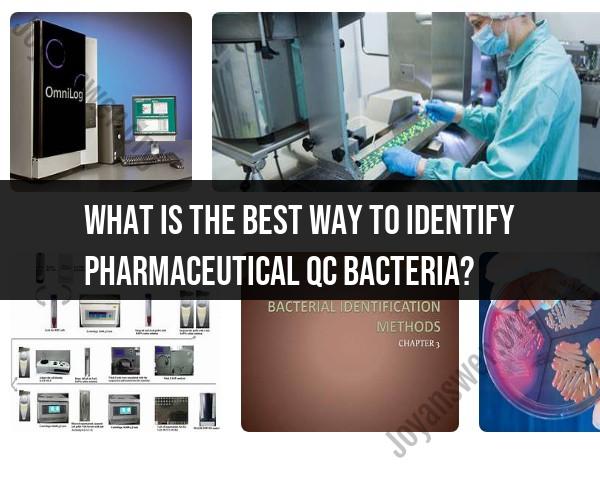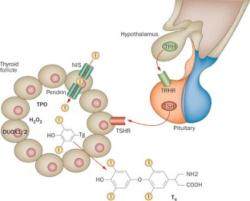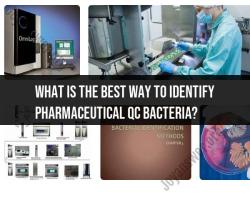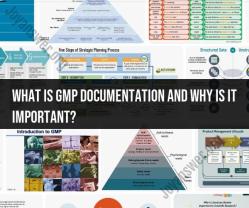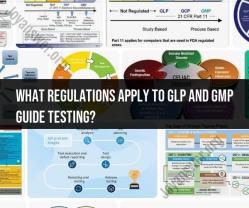What is the best way to identify pharmaceutical QC bacteria?
Identifying pharmaceutical quality control (QC) bacteria is a critical step in ensuring the safety and effectiveness of pharmaceutical products. The best way to identify these bacteria involves a combination of microbiological testing methods. Here are some best practices for identifying pharmaceutical QC bacteria:
Sterile Sampling and Handling:
- Ensure aseptic techniques and sterile sampling methods when collecting samples from pharmaceutical products, raw materials, or production environments. Contamination during sampling can lead to false results.
Culturing Methods:
- Isolation and identification of bacteria often start with culturing methods. Common techniques include spread plate, streak plate, and pour plate methods on appropriate culture media. Incubate the plates under controlled conditions, such as temperature, humidity, and time.
Biochemical Tests:
- After obtaining bacterial colonies, perform various biochemical tests to identify the isolates. These tests can include catalase tests, oxidase tests, Gram staining, and other species-specific tests, depending on the expected bacteria.
Molecular Methods:
- Molecular techniques like Polymerase Chain Reaction (PCR), DNA sequencing, and 16S rRNA gene sequencing can be highly specific and accurate in identifying bacteria at the species or strain level. These methods are particularly useful when dealing with fastidious or slow-growing bacteria.
Mass Spectrometry:
- Matrix-assisted laser desorption/ionization time-of-flight mass spectrometry (MALDI-TOF MS) is a powerful tool for bacterial identification. It provides rapid and accurate results by analyzing protein profiles and comparing them to a database of known bacterial species.
Automated Systems:
- Some laboratories use automated systems such as the Vitek system or the Biolog system for bacterial identification. These systems can provide quick and standardized results.
Growth Conditions:
- Ensure that bacterial cultures are grown under appropriate conditions, including temperature, pH, and oxygen levels. Proper growth conditions are crucial for accurate identification.
Control Strains:
- Use reference strains and control bacteria to validate testing methods and equipment. These control strains can serve as positive and negative controls for quality assurance.
Quality Assurance and Validation:
- Implement a robust quality assurance program and validate your identification methods to ensure the accuracy and reliability of the results. Regularly participate in proficiency testing programs to assess the performance of your laboratory.
Documentation:
- Maintain detailed records of all testing procedures, results, and the identity of the isolated bacteria. Complete and accurate documentation is essential for regulatory compliance.
Regulatory Compliance:
- Ensure that your identification methods and practices comply with relevant regulatory standards, such as those set by the U.S. Food and Drug Administration (FDA) or the European Medicines Agency (EMA).
Ongoing Training:
- Keep your laboratory staff well-trained and updated on the latest identification techniques and best practices. Continuous education is crucial for maintaining the highest quality standards.
Consult Experts:
- When dealing with challenging or unidentified bacteria, consider consulting experts or reference laboratories to ensure accurate identification.
Identifying pharmaceutical QC bacteria accurately is critical for ensuring product safety, quality, and regulatory compliance. The choice of identification method may depend on the specific needs of your laboratory, the type of products being tested, and the available resources. Collaborating with experienced microbiologists and investing in advanced equipment can help enhance the accuracy and efficiency of bacterial identification in pharmaceutical QC.
The Best Practices for Identifying Pharmaceutical Quality Control Bacteria
The best practices for identifying pharmaceutical quality control bacteria include:
- Use a variety of identification methods. No single method is 100% accurate, so it is important to use a combination of methods to identify bacteria. Some common methods include morphology, staining, biochemical tests, and molecular tests.
- Use quality control strains. Quality control strains are known bacteria that are used to test the accuracy of identification methods.
- Maintain aseptic technique. Aseptic technique is used to prevent contamination of samples and cultures. This is essential for accurate bacterial identification.
- Follow standardized procedures. Standardized procedures help to ensure that bacterial identification is performed consistently and accurately.
Importance of Bacterial Identification in Pharmaceutical Quality Control
Bacterial identification is important in pharmaceutical quality control for the following reasons:
- To ensure the safety of pharmaceutical products. Bacteria can cause contamination of pharmaceutical products, which can lead to serious health problems for patients. By identifying bacteria, pharmaceutical companies can prevent contaminated products from reaching the market.
- To comply with regulatory requirements. Regulatory agencies, such as the FDA, require pharmaceutical companies to identify bacteria in their products.
- To improve manufacturing processes. By identifying the bacteria that are present in their manufacturing facilities, pharmaceutical companies can improve their cleaning and sanitation procedures to reduce the risk of contamination.
Techniques and Methods for Accurate Bacterial Identification
There are a variety of techniques and methods that can be used to identify bacteria. Some of the most common methods include:
- Morphology: Morphology is the study of the shape and size of bacteria. Bacteria can be classified into different groups based on their morphology.
- Staining: Staining is used to visualize bacteria under a microscope. Different types of stains can be used to highlight different features of bacteria, such as their cell wall and cytoplasm.
- Biochemical tests: Biochemical tests are used to identify bacteria based on their metabolic activity. For example, some bacteria can ferment certain sugars or produce certain enzymes.
- Molecular tests: Molecular tests are used to identify bacteria based on their DNA or RNA. Molecular tests are very accurate and can be used to identify bacteria that are difficult to identify using other methods.
Quality Control Procedures for Pharmaceutical Manufacturing
Pharmaceutical companies have a variety of quality control procedures in place to prevent contamination of their products. These procedures include:
- Raw material testing: Raw materials are tested for the presence of bacteria before they are used in the manufacturing process.
- In-process testing: Samples are taken from the manufacturing process at various stages to test for the presence of bacteria.
- Finished product testing: Finished products are tested for the presence of bacteria before they are released to the market.
Ensuring Safety and Compliance in Pharmaceutical QC
By following best practices for bacterial identification and implementing quality control procedures, pharmaceutical companies can ensure the safety of their products and comply with regulatory requirements.
Here are some additional tips for ensuring safety and compliance in pharmaceutical QC:
- Keep up-to-date on the latest regulations and standards.
- Train your staff on the importance of bacterial identification and quality control procedures.
- Regularly review your quality control procedures to ensure that they are effective.
- Use a laboratory information management system (LIMS) to track your data and ensure compliance.
By following these tips, you can help to ensure that your pharmaceutical products are safe and compliant.
